 This is the best book on General Relativity (GR) that I have read. It took me four tries to get all the way through it. Each time it got a little easier. Normally, I would describe the contents of the book in notes form so that I could review the book again later. I cannot do that here for several reasons. There is a lot of math. You need special software to typeset math. You cannot begin to understand GR without it. But I cannot even write down his famous equation (it is actually quite short, only 9 characters long, with proper assumptions), or any of the mathematical statements because they are hip deep Greek letters, superscripts, subscripts, indexes, tensors and mathematical operators. For the record, I got through 2nd year university mathematics before switching to computer science. I thought myself quite good at math in high school (# 2 in the school, as I recall), but that is a far cry from the mathematics needed for GR. You must be familiar with basic calculus to get very far in this book. The mathematics of GR is called "differential geometry" and it is based on tensors. Tensors were difficult for Einstein, so I do not feel bad that I find them hard too. A tensor is a lot like a matrix. Matrices can be added and multiplied etc much like ordinary numbers. A matrix is a tensor if after any valid tensor operations or transformations, a certain calculated value derived from the tensor always remains unchanged. That value can be thought of as the "distance" between two points… also called "the metric". Part of what Einstein did is formulate several possible metrics that conform to his GR principle. Here is what GR says: Space tells matter how to go; Matter tells space how to bend. That is it really. We live in a flat Euclidian world. We can carve up our world using a simple coordinate system to locate things in time and space, and we use Pythagoras' famous equation for the metric. We need to add one more space term because we live in a three dimensional world, and another for time, but it works exactly the same as original 2D Pythagorean formula we all learned in high school. You will often see the time coordinate multiplied by "c", the speed of light, but that is just an artifact of a units choice. If you measure speed as a fraction of "c", the "c" disappears. GR is extremely difficult mathematically. Finding general solutions to Einstein's equation is damn near impossible. But if simplifying assumptions can be built into the metric, things get easier. The metric in GR is the goal in many ways. The most famous one is called the Schwarzschild Metric. It describes a non-spinning, chargeless, mass in empty space. It was used to derive some of the more interesting aspects of GR, such a gravitational red shift and gravitational bending of light. It is worth mentioning just how important one idea is to GR. This is Einstein's "happiest moment"… the realization that the Equivalence Principle must be true. Stated simply, it says there is no experiment that can be performed that can distinguish between a uniform gravity field, and uniform acceleration. One of the main reasons it took so long for the formulation of relativity is that we, walking about on the Earth, are accelerating. That is, we are not in an "inertial frame of reference", which is one that that moves at a constant velocity (i.e.: no acceleration). If we could observe everything from such a vantage, the basic laws of motion would have been blindingly obvious. From an inertial frame of reference, a hit baseball travels in a straight line forever. The fact that our frame of reference is accelerating turns it into a parabola and makes it hit the Earth. We live in a very nearly uniform gravity field. It is not uniform, even for an ideal Earth (perfectly spherical and of uniform density), because the forces of gravity diverge a tiny bit (resulting in tides). If you drop a ball, it falls to the ground at 32 ft/sec/sec. If you are way out in space in a space ship that is accelerating at 1 G exactly, and you drop a ball, the exact same thing will happen. And there is no way (in physics) to tell the difference. This simple realization is one of the core assumptions upon which GR us built. Mercury's perihelion (closest approach to the sun) precesses. That is, it moves very slowly, taking 225,000 years to get back to its original point. The fact that they could make these fine measurements around 1900 is astounding. Most of that precession can be explained by Newtonian calculations of the tugs of the other planets. But not all. A tiny bit was left over, and Einstein said that relativity could account for the it. This was verified. This is incredible accuracy. A second of arc is the width of a penny at 2.36 kilometers! What was at issue was 43 seconds of arc per century! And that is exactly what GR predicted. Eddington famously went to the island if Principe in 1919 and did measurements of star positions very close to the sun during a total solar eclipse. They were deflected by the mass of the sun (which Newton would not have predicted). Space around the sun was bent, as predicted by Einstein. I made a lot of written notes as I worked, and reworked, my way through this book. I will use them when I tackle it one more time in 5 years or so. One does not have to be able to follow all of the math in this book. God knows I did not. But it is possible to see the math from a slightly higher perspective and understand that "this bit of the formula accounts for this, and that bit for that", etc. Fun fact: We all know Einstein's most famous equation E=MC2 that "popped out" of Special Relativity, Namely energy equals mass times the speed of light squared (a very large number). Apparently, the derivation of this famous equation involved many pages of calculations (i.e., equation manipulation). And just when it all seemed like it was going nowhere, all the various terms canceled each other out, leaving the one equation we all recognize. I really enjoy digging into this type of "origin, workings, and fate of the universe" physics. It is like looking the god of Spinoza right I the eye, and as close to the Rapture as I will ever get. .
0 Comments
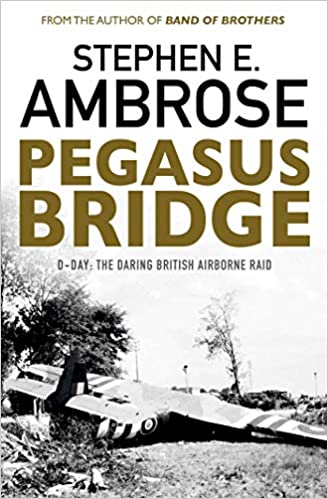 If you have seen the movie The Longest Day, and remember it, then you aware of part of the story of Pegasus Bridge. It was a critical bridge assigned to the British to capture. A word about names: The hero and leader of the Company is John Howard, played by Richard Todd in the movie. The attacking British crew included a chap named Todd Sweeny (his parents had a sense of humor), and another whose last name was Sweeny. Both were called Todd. And another fellow was named Pine Coffin! The D-Day targets for Howard and his men were actually two bridges. The Orne River and the Caen Canal run parallel to each other at this point, flowing roughly north to south, with the D Day beaches to the east. Benouville Bridge crossed the canal to the west. The Ranville Bridge crossed the Orne river to the east. There were about 500 meters apart. The aim was to land three gliders next to each bridge (six in total), take them intact, and hold until relived. It was to be the first action of D-Day starting at midnight on the morning of the 6th of June. The bridges were almost certainly wired for demolition. These bridges would be critical in getting men and material off the beaches and inland, Howard's glider hit the dirt only 50 meters from the Benouville bridge. The first soldiers to touch D-Day dirt were actually the glider pilots. They were both pitched through the glider windows and knocked unconscious. The other gliders also landed successfully, but a little further away. The first soldier to fire a round on D-Day was Howard himself. The whole company was known as D Company. They each sported a patch displaying Bellerophon astride Pegasus, the winged horse. The Benouville Bridge was renamed after the war to Pegasus Bridge and Howard had a street named after him in Benouville. The German garrison was run by von Luck of the 21st Panzer Division. It consisted, in part, of soldiers who were essentially slave soldiers: Poles and Russians and such, poorly trained, ill-disciplined, and disinclined to get shot at. The bridge was indeed wired, but the explosives had not been put in place. The soldiers on guard that night were caught napping. Both bridges were taken in fairly short order. Then the soldiers had to wait, both for paratrooper reinforcements to arrive, and for the inevitable counter attack by the Germans. The big fear was of the tanks stationed in nearby Caen. A counter attack did come and was repelled. But the main tanks never came because Hitler was famously snoozing and no one had the guts to wake him. Von Luck could not act without Hitler's OK. The airborne troopers did arrive… late and under-manned. Many troopers got lost in the surrounding woods. It was the sound of combat that actually lead them to their target. As per the movie, Lord Lovet came off the British beaches and headed straight for the bridges to relieve Howard, and they did so in style, with bagpipes playing. The rest, as they say is history. Caen was a stubborn target. The allies struggled on the beaches for much longer than planned. The town of Benouville was the first to be liberated. The owners of a local inn were the first to greet their liberators. They hosted get-togethers for the vets for decades after the battle. This book was based on interviews with the people who were there. It is a fairly quick and enjoyable read. Some good guys were killed, but for the most part, the story is one of valor, dedication and victory. 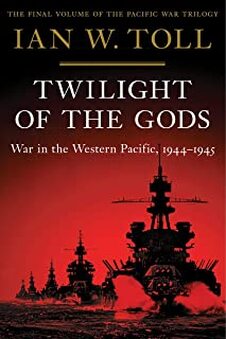 Admiral Kimmel and General Short, to whom this book is dedicated, were dealt a lousy hand. They were the top brass when Pearl Harbor was hit, and they paid the price. Kimmel ultimately committed suicide. MacArthur, on the other hand, had a nine hour heads up on the de facto state of war between the US and Japan, and he did nothing. Zip. Nada. Rather, he cloistered himself and read the bible. MacArthur, was a "pompous and ignorant ass", the Montgomery of the Pacific, and went on to become king of Japan. As a direct result of his sloth, half of the US air force in the Philippines was wiped out on the ground. He should have been court martialed and jailed, or even shot. But such is life and politics. This is a long and detailed book. It begins, more or less, with the invasion of the Gilbert and Marshall Islands. The first really big action was the Battle of Leyte Gulf, the largest naval battle in history. I will not discuss this battle in any detail as I have already done so with another book. MacArthur spent most of his time trying to take supreme control of all forces in the Pacific. Halsey, known as "Bull" Halsey was about as smart as his name sake. Dogged and pig-headed. Other commanders such as Spruence were more cautious. After Leyte, the Japanese navy was no longer a threat. But there was still plenty of tough fights ahead. The Marshalls, the Solomons, Tulagi, Guadalcanal, Wake, Ulithi, Peleliu, Kwajalien, Guam, Saipan, Iwo Jima, the Philippines, Okinawa… these are some of the better known islands that were taken during the island hopping part of the war. These island fights were bloody to say the least. Japanese suicide charges were fairly common near the start of this campaign, but too costly in terms of man power. Later, Japanese held islands were dug out labyrinths of caves and tunnels that had to be taken at a horrible cost. On Iwo Jima, for example, only a dozen or two Japanese soldiers were captured. Thousands died for their emperor. Japanese hawks basically lied their asses off to the emperor and the Japanese people. For example, they kept the loss of the four aircraft carriers at Midway a secret for many months after the fact, and even then downplayed the outcome. Meanwhile, US subs were choking the life out of Japan. The fleet had a huge appetite for oil, and the silent service made sure very little reached Japanese shores. On the other side of the coin, Japanese kamikazes appeared for the first time in the struggle for the Philippines. They were basically unstoppable and a precursor of today's smart weapons. They were responsible for an extraordinary amount of damage. Young pilots were taught just enough to take off and that was it. And they begged for the opportunity to live forever by sacrificing themselves for the emperor. The Japanese built the two largest battle ships in history: the Yamato (sunk off Okinawa) and the Musashi (sunk during the Battle of Leyte Gulf). They were huge (879 feet long; 72,000, tonnes battle loaded), and an anachronism. By now, battle ships were out and carriers were in. Many missions by US subs were memorable, but one stood out for me. A sub skipper named Enright had captained the Dace (all US subs were named after fish, the most famous being the Tang) and returned to Pearl with zero tonnage sunk. He felt perhaps he was not cut out for skippering a boat. But 8 months later, he decided to try again as captain of the Archerfish. On 27 August, he found a target that looked to be a large carrier. It was the Shinano, built on the third, now repurposed, Yamato-class battleship hull. After a long chase, the Archerfish fired a spread of 6 torpedoes. Four hit, and the Shinano went down. Normally, four hits would not have sunk her, but she was running on a reduced crew and had yet to be fitted out for war. Enright's story was not believed until after the war when the existence of the Shinano was revealed . A sub patrol's success is based on tonnage sunk. A good patrol might sink eight ships with combined tonnage of 40-50 thousand tonnes. Enright sunk one ship, and at 65,000 tonnes , had scored the highest tonnage sunk on one patrol. From the Philippines on, the main weapon of the Japanese was the kamikaze. The Japanese were happy to throw away their young men, and as mentioned, they really wanted to go. The Japanese had a number of kamikaze weapons (planes, subs, missiles and more), but the usual one was a young man in a crappy plane. As the war progressed, the Japanese had fewer and fewer planes, and more Kamikazes. This was due to the lack of oil, needed to smelt the steel, needed to make planes. On the American side, they had so many new planes coming in that the would simply retire, or bulldoze older or slightly damaged planes into the sand and replace them with newer, better planes. Such was their economic might. The worst battle, IMHO, was Iwo Jima… almost literally hell on Earth. Sulfur fumes and hot gases came out of the ground. If you were climb into a fox hole, you would be forced out just to cool down. The deeper you dug, the hotter the dirt got. It is difficult to describe how awful the conditions were on both sides. Iwo Jima gave damaged bombers, flying from Tinian to Japan and back, a place to land. This was a very big deal. At this time, the Japanese air force was all but non-existent, with the noted exception of suicide pilots. The Battle of Okinawa was waged in the air primarily by these planes. Okinawa was only 300 miles from the Japanese mainland. We all know how it ends. Due to politics, MacArthur, the general who should have been shot, became the new ruler of Japan, which quickly joined the ranks of civilized nations. A word or two about religion is appropriate. Both sides demonized the other. But any measure of civilized behavior, animated by religious fervor, the Japanese were far more fanatical. In addition to kamikazes, there were instances of ritual cannibalism. And the entire Japanese population, deluded by years of propaganda, and driven by the belief that they were the chosen people, and that the emperor was their actual and true god, were prepared to die. This belief held sway until August 14, 1945, when their god told them to lay down their arms to surrender. Which they did! One speech from one guy ended the war. One wonders how many lives could have been saved if he had done so earlier (in fact, due to politics, it was never really an option). Uncounted numbers of people died during the war to appease the gods. Christopher Hitchens said "Religion ruins everything", even war. The Japanese were told that the Americans were a mongrel and bloodthirsty race. Most were shocked by the humanity the Americans displayed towards them after their surrender… no doubt in part because they knew they would not have been so kind. MacArthur may have been a douche bag, but he did understand the psyche of the Japanese and used it to good effect. There are many arguments on both sides regarding the use of the A-Bomb. I will not go into them here, other than to say that using them probably saved many lives. One motivating fear was that Russia was rushing its forces to the East and they might try to take Japan's northern island, in which case Japan would have joined Germany as a divided country, one half behind the iron curtain. That would have been bad. This is a long read, but very well researched and written. 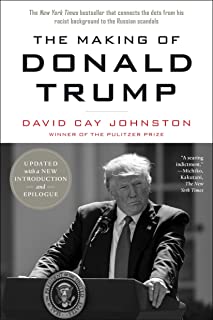 David Johnston is a regular on the news shows as an expert on Trump and how he got to where he is today. The book is four years old now. There is very little that is new, and much that is familiar. If you have followed the coverage, you are probably aware of grandpa Trump, who fled Germany to avoid the draft, and built and ran brothels. Daddy Trump was ruthless and corrupt. The Trump family has been in close contact with the mob. And so on… The only thing that stood out for me is how many times Trump et al have been sued, lost, and then settled, only to have the settlement sealed. I do not think Trump would be where he is today without that. By sealing his court losses, he gets to pretend he won. I learned little from this book. It is for Trumpaholics only now. But if you are not aware of the sordid details of Trump's life, this is the best book documenting the family up until 2016.  in thThe Battle of Leyte Gulf (BLG, October, 1944), which took place several months after the Battle of the Philippine Sea (BPS, June, 1944), essentially ended the mighty Japanese Navy as a threat in the Pacific. Ray Spruence, who acquitted himself quite well at Midway some two years before, was overly cautious. He headed the American side of the BPS and had a good shot at the taking out the Japanese Navy. But that would have to wait. Regardless, the BPS, AKA "The Great Marianas Turkey Shoot" was a great success. The Marianas were the target of the invasion that was designed to bring the Japanese out to face the Americans. The Marianas include Guam, Saipan (a sad story, where many Japanese, fearing the Americans, committed suicide), Tinian (the Enola Gay took off from there), and Iwo Jima (the bloodiest of the island hopping amphibious assaults). The Japanese were desperate at this point. They were up against it, primarily in terms of fuel. American submarines had dramatically curtailed their oil supply. This shaped the battle in many ways. At one point, Japanese destroyers were getting fueled from battle ships, rather than oil tankers! Much of the oil burned by the Japanese in the BPS was pumped directly from the ground in Tarakan, Indonesia and into the tanks of combat ships. This oil was high in paraffin and could be burned without refining. Thus, the fleet went to the oil, rather than the other way around! Spruence decided he would wait for the Japanese to come to him. This made sense because the Japanese Navy planes had longer range than the Americans, and the Americans wanted to draw the Japanese in close. This worked to a point. The Japanese found the Americans first and launched all they had. But the defeat at Midway had decimated their Naval fliers and crews. The battle hardened Americans fliers met a bunch of rookies and tore them apart. Like the Battle of the Coral Sea (BCS) and Midway, no ship ever sighted an enemy ship. American submarines played a large part in the BPS, sinking at least one carrier. No so, for the Japanese. The Thatch Weave, introduced at Midway by flier Jimmy Thatch, was used to good effect. The Japanese Zero (AKA Zeke) was faster and more agile than the Hellcat. But it could not take a punch. The Hellcat could. The Weave worked like this. Two planes fly together… a lead plane and a bait plane to one side and behind. A Japanese flier will naturally want to attack the rear plane first. The moment that happens, the two American planes veer violently towards each other, crossing each others paths and moving apart; and then they quickly swing back towards each other. This brings the Japanese plane chasing the bait plane under the guns of the lead plane, and down it goes. One or three stories stood out for me. A flier named Henderson flamed 4 "Zekes" (Mitsubishi Zeros) on his first pass, and then was lost from sight by his mates. His last message was "I knocked down four, and I have thirty more of them cornered!" Another flier named Vracia landed his plane on the Lexington after the first major air engagement. As he was climbing out of the cockpit, he saw Admiral Mitscher looking down at him from the ship's island. He flashed a huge grin and held up 6 fingers, one for each kill. A third story starred a Japanese flier. Because the Japanese fliers were so green, they had to be individually instructed by their flight leaders, in the air, minutes before they were to go into battle, regarding what each should do, and when, when they attacked. The Americans had a fluent Japanese speaker on board who listened in, providing essential intelligence for the Americans fliers about to enter the battle. At the end of the fight, the Americans let him go (i.e.: did not give chase) because, as an admiral quipped, he had done so much for them during the battle. Although there was much more to the battle, it ended with the Americans launching everything they had at the Japanese at extreme range. This meant many fliers were forced to ditch as they ran out of gas on the return leg. In the end , the Americans sank three carriers and did damage to a few other ships. On the Japanese side were the two biggest battle ships in world history: the Yamato (sunk at Okinowa) and Musashi (sunk in the BLG).They had a dozen or so carriers and many support and screening vessels. The Americans had a similar complement, including the carriers Yorktown and Lexington. Savvy readers will note that the Yorktown went down at Midway and the "Lex" was sunk in the BCS. The mighty US industrial base had replaced them. At the end of the war, the Americans had more than 100 carriers of various sizes. I believe that the Enterprise and the Hornet (the Dolittle Raid carrier) survived the war. If you recall the movie Magnum Force, there was a motorcycle "duel" on the decks of the Hornet at anchor in San Francisco Bay. The BPS finished the Japanese Navy's command of the air. Indeed, the now nearly useless aircraft carriers (due to lack of planes, pilots and crews) were used/sacrificed as a lure/feint during the BLG. The book has many fine photos and anecdotes. I enjoyed it a lot. The writing was compelling and It really aided my thinking about the Pacific War. It is frustrating to look at the shared sense of duty that the Americans had in 1944. Today, they can't agree on which way is "up". Weird Earth; Donald R. Prothero; 2020; Red Lightning Books; 248 pgs; notes, further reading, index;23/12/2020 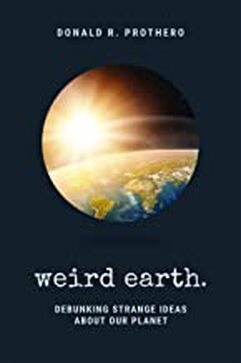 his book is in fine company. It is a book primarily about skepticism. The author and I have a little in common, in that we were or are members of a Skeptics Group. Prothero, a PhD geologist, is with the Pasadena Skeptics. I note that he is a PhD because he warns of books written by people who flaunt their PhDs. The book covers geology related subjects that are a decent sub-set of all the crazy ideas that are out there. Young Earthers are trashed, as are flat Earthers, hawkers of crystals, Atlantis, dowsers, and moon-landing deniers. Aside: Andy Kaufman died because he rejected modern medicine and relied instead on crystal healing. It was a quick read and a good addition to my library on subjects (like Ley lines) that I would otherwise have to research. One thing that comes across very clearly is that scientific illiteracy in the US is driven largely by the cesspool of the internet. In fact, by my count, he called the internet a "cesspool" four times. Ironically, the internet was created to serve scientists and promote data exchange. He speaks highly of, and quotes often, Carl Sagan. As a long time skeptic myself, I am familiar with the arguments about wrt scientific literacy, basic logical arguments, human biases, and such. I only know one person personally that is foolish enough to posit a 10,000 year old (or less) Earth. I have had several exchanges with him over the years. One argument that gets repeated a lot is that his belief in god is no different than my belief in Newton's gravity and other scientific ideas like evolution. I often reply to this attack by explaining that I use the word "believe" in a different way (based on probability) than he does. The book suggests a different language, the gist of which is below: Science has only one "belief"… namely, that the world is understandable. I do not "believe" in Newton's law, but rather I accept it, based on, in this particular case, an overwhelming preponderance of the evidence (Newton's laws got us to the moon and back). I like this language better, as it is easier to justify. I also enjoyed the obvious fact that the author likes movies. He mentions several, including the worst SF film ever made (as voted by geoscientists), The Core. The Abruzzo, Italy earthquake resulted in many deaths, and six seismologists were convicted of manslaughter for not predicting the quake! After 5,000 seismologists wrote letters, the conviction was overturned. Its hard to be a scientist sometimes. The book has a well researched chapter on The Flood. The details of how Gilgamesh and the various versions of the old testament are weaved together into a mish-mash of "god's word" is very interesting. No one who understands how the Bible came to be can believe that it is the actual word of god, because it comes from several different sources, and it contradicts itself and reality… a lot. The absolute most charitable one can be is to say that the bible might reflect god's wishes, as filtered and understood by man. But that is thin gruel at best. This book has a lot of fine photos and illustrations. It discusses basic skeptical issues like reserving judgment and human bias. And many of its topics are historical in nature, so there is lot here for a newcomer to the skeptical world to absorb. If you have any interest in geology and the basics of skepticism, this is a good book for you. 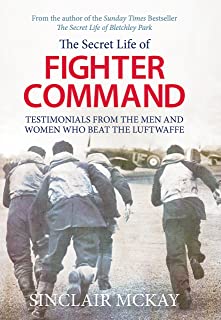 ofThis book and The Splendid and the Vile cover much of the same ground, but from different perspectives. The latter looks at the politics and infighting in Fighter Command and other agencies from the top… Churchill, Beaverbrook et al and their upper-class struggle to win the war. This book views the struggle from the bottom. Regular men and women thrust into the war and getting life lessons in fighting and dying. The first familiar person mentioned, who appears again and again, was Douglas Bader. The double amputee was inspirational for millions of Brits. Another name that popped up a few times was Watson-Watt, the genius behind England's secret weapon: radar. Air Marshall Hugh Dowding and his junior Keith Park were the top people running Fighter Command. Leigh-Mallory was also there. His brother George Mallory was notable as one of the first to climb Mt Everest. He did not climb down and his mummified body stood guard over the route up for decades. Leigh-Mallory was re-assigned after the Battle of Britain to Burma. Ironically, he never made it: his plane ran into a mountain. I would write more about these folks, but the book lacks an index, so finding items in it is hard. I will only mention a few highlights. The very first Battle of Britain sortie was so badly botched that two friendly squadrons went at each other! The first fatality in the Battle of Britain was a British pilot, shot down by another British pilot. One theme came up regularly: the death of the British class system. War boils people down to their lowest common denominators, and class disappears. This was eye-opening for many people, especially young upper-class women who were suddenly removed from their posh surroundings and injected into the thick of it. Bader was always pushing for more aggressive tactics during the battle. He was an advocate, along with Leigh-Mallory, of the "big wing" concept, which never really got off the ground. He fought the Battle of Britain like a champion; got shot down; and closed out the war in Colditz. Polish pilots were terrific (in its original and modern sense). At the end of the war, they were told to go home. Home was now behind the Iron Curtain. Ultimately, the government relented and any Polish pilots who wished to stay, could. At the end, the V1s and V2s started falling. Brave ammo-less pilots would catch up to the V1 and tip it with their wing tips. This was called "nudging". This action threw off the V2s gyros causing it to crash. When the battle was won, both Park and Dowding were tossed aside. As the book notes, people are remarkably dismissive of their saviors after the are saved. This book was written just a few years ago. As a movie fan, I was pleased to see a lot of references to the movies that have been made about this period, most notably Reach for the Sky and The Battle of Britain. I can think of a couple of propaganda films that featured killed British flyers going to heaven where they met their slain mates. I thought this was just story telling, but it actually reflected a prevalent strong belief in spiritualism at the time. This is not "spiritualism" as we use the word today. Then, it meant belief in ghosts. People like Dowding write books on the subject. I liked this book better than The Splendid and the Vile in that it spoke more about day-to-day life of all the service people during the war. The Observer Corp, Home Guard, and especially WAAFs and various other female groups that worked at Blechly Park (code breaking), and a Bently Priory (tracking incoming bombers and scrambling fighters to intercept), and operated the radar units. 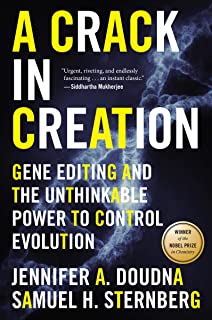 If you examine the book cover, you will notice that some of the letters are in yellow, the others in white. The letters in yellow are A, C, T, and G… the first letters of the four amino acids that make up DNA. The author's last name is "Dou DNA", but that is just a coincidence. So this is a book about biology. I know a lot more about physics and computing than I do about biology, but oddly, that knowledge was quite helpful. My thanks to Blythe Nilson who corrected some ugly errors in my first draft of this piece. CRISPR, the underlying technology here, is as important to our future as nuclear power. So you should know something about it. You don't need to know how it works, just what it might be able to do. Physics and chemistry are closely related. Biology is chemical. And DNA biology is also very computational. DNA's ACGT structure is binary (i.e. base 2) code. You might say "Then why are there four letters, rather than two?" Because nature needed an easy way to copy DNA. The DNA chain is made up of paired letters: A always pairs with T, and G with C (each pairing is a bit). This allows the DNA to be cut in two long pieces, and then each piece is reassembled into a complete DNA chain by re-pairing (or repairing) the chain by adding the appropriate matching letter. One copy of DNA becomes two. This is the chemical basis for reproduction. Each triplet of these letters code for a particular amino acid, and the sequence of DNA dictates how these amino acids will be built into proteins. Proteins are the true stuff of life. As I read this book, I was struck by the number of times I could see software analogies in the chemistry. In computing, data and code are two sides of the same coin. The same is true for the molecules of life. They are hardware (a fixed bunch of atoms arranged just so) and software (do this, then do that) all packaged up into a single object. Enter CRISPR (an acronym for Clustered, Regularly Interspaced, Short Palindromic Repeats), a new technology that is both enormously promising and bloody scary at the same time. CRISPR is not a great name. Even knowing what the letters stand for tells you nothing about what is actually is. The one chapter in the book that describes the CRISPR details is challenging. It is full of acronyms and strange words, making it hard to follow. The rest of the book is much less challenging. CRISPR was initially just an observation that part of the DNA of the bacteria consists of Repeating Clusters of DNA. The repeated bits read the same forward as backward (Palindromic), were quite Short, and were always the same distance apart (Regularly Interspaced). It soon became apparent that these genes were associated with the bacteria's immune system. What a bacteria fears is a phage (short for bacteriophage), a virus that attacks bacteria. The CRISPR genes contain a length of genetic material in the Regularly Interspaced part. These bits of RNA are actually viral RNA that was taken from a phage in the past, and is now used as a pattern matching template to recognize viral DNA. Associated with CRISPR is an enzyme that, once activated, destroys its DNA/RNA target… in this case, the phage. Aside: RNA and DNA are chemically very similar and sometimes serve similar purposes. RNA is a single stranded molecule, and DNA is double stranded. RNA uses uracil (U) instead of thymine (T) in its code. Once the enzyme is released, it zooms down the DNA chain at a rate of 300,000 nucleotides per second, carving it up into amino acid junk! That is fast! Scientists realized that this mechanism could be used to find, change, and/or disable genes with amazing accuracy. For a software guy like me, I see many analogies to computer code. Each segment of phage DNA/RNA in CRISPR is used as template to find an invading phage and kill it. This is like a parameter to a subroutine or, if you prefer, a kind of microscopic Google search using the DNA segment as the search target. This is hardly surprising since, at its core, genes are a series of zeros and ones that are used to make you and me. In other words, it is all software and software is easy to change (hence the "soft" part). CRISPR technology has enormous potential for both good and evil. It might be used to cure horrible genetic diseases such Huntingtons, or it could be used to create supermen. It can be used to hunt down one gene with one wrong letter, tag that gene for repair, and then get the mechanisms of body to repair it. Sickle Cell Anemia is one such disease. When writing software, one generally designs top-down and builds bottom-up. In the software of real life, there is no design, only what works. Software starts with building tools; and then uses those tools to build larger software structures which, in turn are used as tools to build even more complex structures and procedures. And with all these tools lying around, there often comes a realization that the existing tools could be easily repurposed to do something that previously seemed out of reach. I have experienced this many times in my software career. Bio-researchers are discovering all these tools lying around in the cell and are closing in on learning how to use them. CRISPR opens many doors, some of which we should probably keep locked. Curing an awful disease is obviously a good thing. Changing human germ cells is much scarier. Changes to human germ cells means that the change is passed on to offspring. And that smacks of eugenics, NAZI supermen, designer babies etc., and it raises many ethical questions. The closing chapters of the book focus on the future and the inherent advantages and dangers that CRISPR embodies. Biotech like CRISPR gives us god-like powers to manipulate life. Advances in biotech and computing make it possible for us to wield those powers. I do not think it an exaggeration to say that CRISPR is the biotech equivalent of the Manhattan Project. I hope mankind learns to use it wisely, because use it we will. 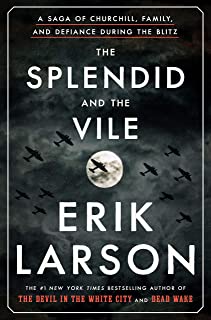 I do not have a lot to say about this book. A friend suggested it and I read it. It is well written, engrossing at times, and had many insights into the terrible struggle to survive that England went through in the first years of the war. There are a few very colorful characters, and few dark ones as well: The image of Churchill walking around naked, drinking brandy and champagne, barking orders, and smoking his cigars is almost a cliché. Lord Beaverbrook, the most interesting personality in the book, almost single-handedly ramped up airplane production and won the Battle of Britain. The Battle of Britain was the air war during the summer of 1940. The Blitz was the bombing of London and other civilian sites, and it went on much longer. The Battle Britain ended when the Blitz began. Lindemann is a character I knew a bit about from other readings. He was Churchill's right-hand man, science advisor, and general all-round dickhead... hated by everyone. "Often wrong but never in doubt" sums him up pretty well. While he may have contributed to the war in many positive ways, the reverse was also true. For example, a few years later, he dismissed the idea of the V2 as a physically impossibility. He was very, very wrong. Randolph was Churchill's ne'er-do-well son (his other children were women). A drunken, philandering, gambler… he spent about a million dollars a year (today's money) on booze, broads and gambling! Rudolph Hess was the most interesting German character that was explored. I learned a few new things about his ill-fated trip to England to make peace. He would remain in Spandau prison, its last inmate, until he killed himself at age 94. Adolph Galland is another interesting German character. He was an ace fighter pilot. I read his biography in my 20s. By the war's end, he was a general and ran the entire fighter defense of Germany. Later on, he was a technical consultant on the making of the movie "The Battle of Britain". He was the only pilot who was allowed, personally, by Hitler, to smoke cigars and fly at the same time. He smoked 20 a day. The other principle characters are the remaining members of the Churchill family. A low-key Peyton Place. Politically, the first years of the war were about survival and getting the US into the fray. The Lend-Lease Act was a big part of that. The pressure of constant bombing had eased up by mid '41, as Hitler turned his eye to the East. Within a week of Pearl Harbor (Dec 7, '41), the US was at war with both Japan and Germany. Germany declared war on the US, and the US reciprocated. The US was the only country that Germany declared war on in WWII! This is where the book ends. This is a long book, but an easy read. If you skip a sentence or two, you don't miss much. I normally scribble notes into the books I read, and then summarize them afterward. I did that here, but only scribbled about a dozen times. In other words, I learned very little worth knowing. But if you want to get a feel for the gestalt at the time; the attitudes and feelings of both the government players and the people; and the nature of the suffering they went though, I would recommend it.  Ben Goldacre is a UK Physician. He has written two books on this general subject: the shorter Bad Science and the longer Bad Pharma. He is a good writer with a cutting sense of humor. Unlike most doctors (GPs anyway) he knows a thing or two about statistics and probabilities. Blythe N. and Dave H. know about my disdain for chiropractors. During our radio days, their disdain for nutritionists turned out to be just as strong. Ben would concur. Goldacre fires broadsides at the usual targets such as homeopathy, as well as a few lessor known examples of bad science, like brain training, detoxing, and the anti-oxidant scare. And like many other skeptical publications, he takes a close look at placebos and regression to the mean, the life blood of quacks everywhere. Good vs bad science is easy to recognize, even for the cognoscenti, and for every study, there is an opposing study. To deal with this, a check list protocol was set up called JADAD a meta-analysis protocol was built on JADAD called the Cochrane Collaboration. These two ideas allow the truth to eventually come out. It is likely, for example, that the recent reversal on cholesterol was based on this method. Surprisingly for some, he poo-poos placebo based trials, as this is often a dodge. Researchers test their products (i.e.: drug) against placebo, the lowest possible standard, and not against the best product on the market at the time. A major warning from the good doctor: If anyone expresses anything with respect to diet in terms of certainty, they are full of crap. He debunks another myth by stating that most of modern medicine is, in fact, evidence based. Here are some fun real-world examples (think big tobacco) of cheating in the business of drug science.
Or do what the NFL did: set up its own bad research; establish a self-published journal; and then stack it with doctors on the take (see League of Denial). Both Bad Pharma and this book go into some detail on this topic. One solution, which is not yet been adopted, is to register experiments before they start. This forces a priori documentation of experiment protocols, success/ fail criteria, etc. and would go a long way toward eliminating some of the manipulation that goes on today. The books closes with a discussion of the MMR (measles, mumps, rubella) fiasco. Ben has a few kind words for Jenny McCarthy et al. This is must reading for all skeptics. |
AuthorLee Moller is a life-long skeptic and atheist and the author of The God Con. Archives
January 2024
Categories
All
|
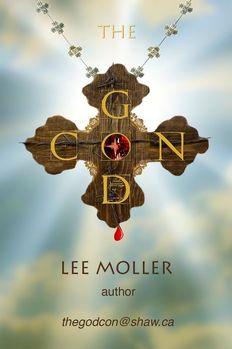
 RSS Feed
RSS Feed